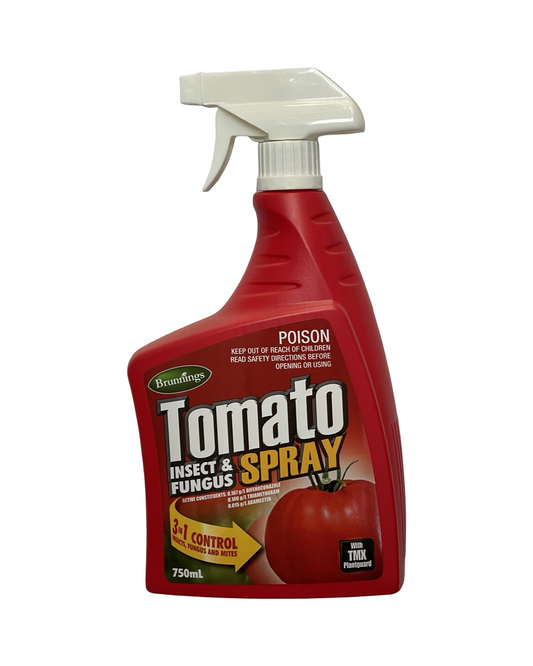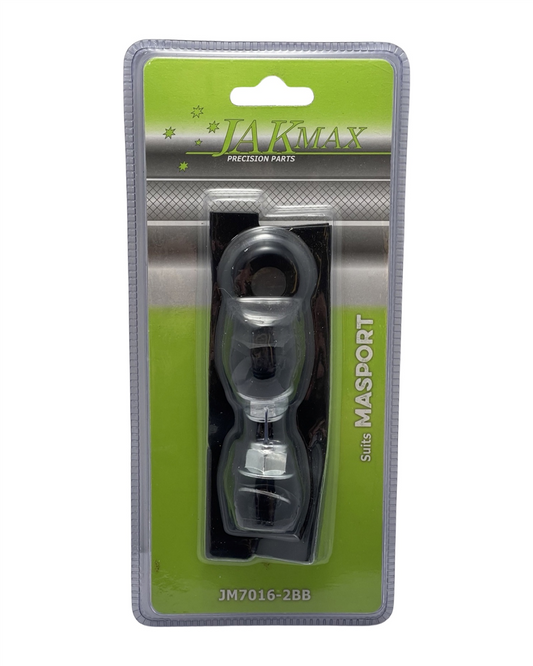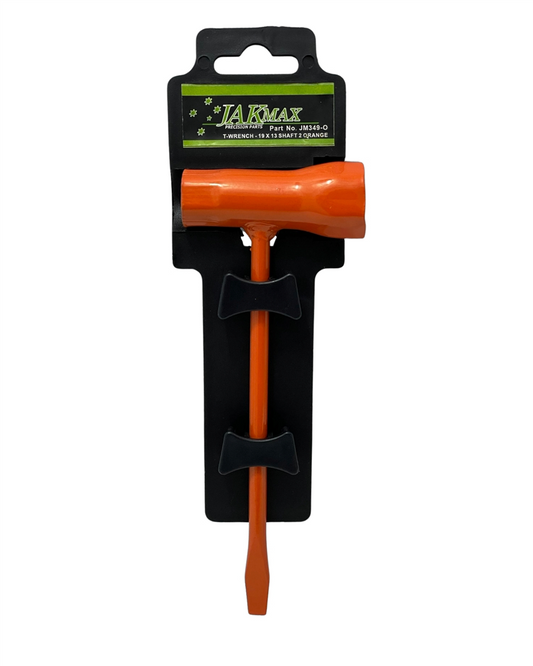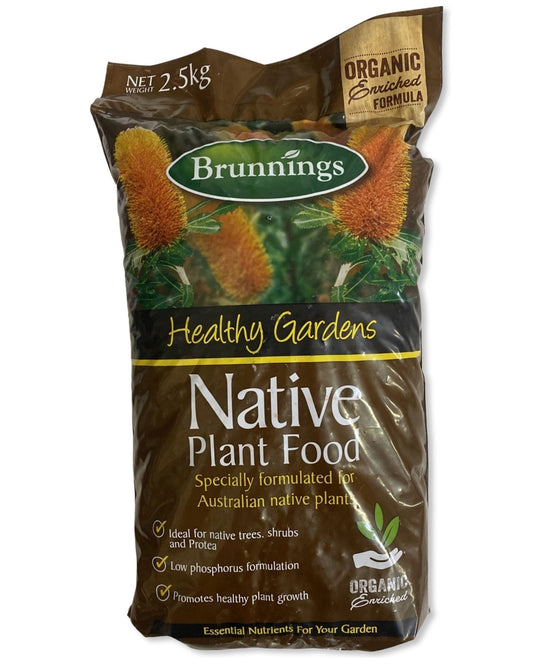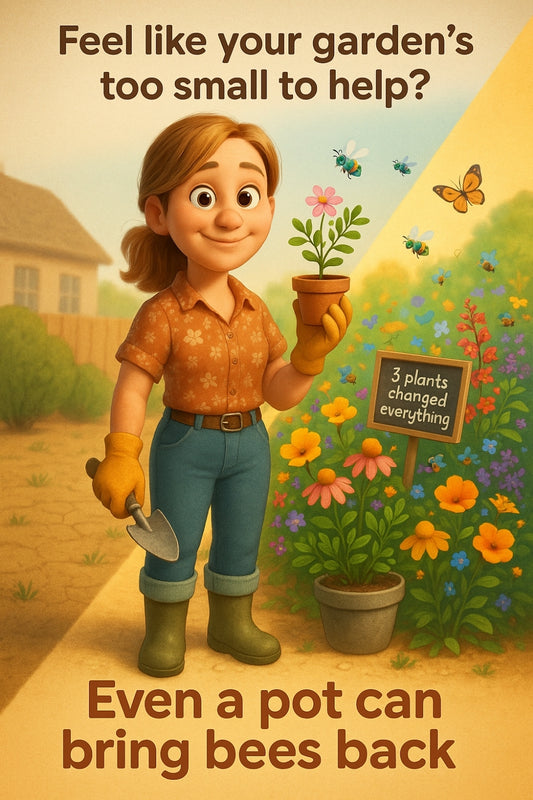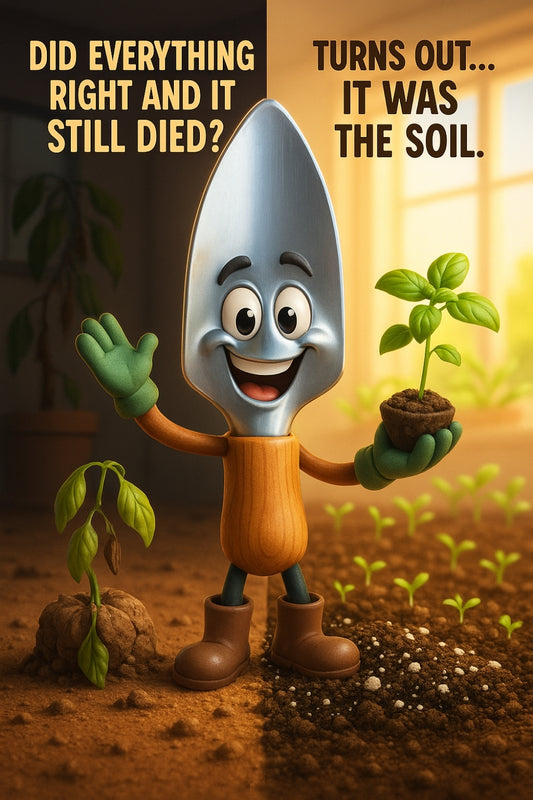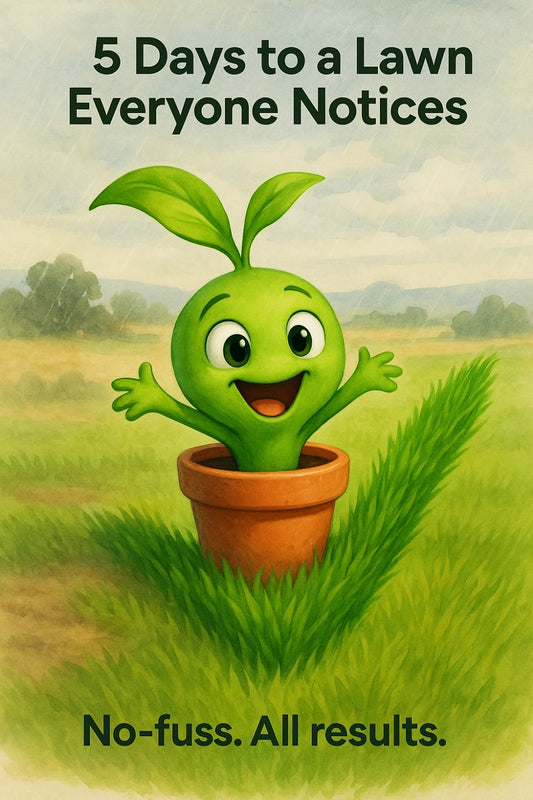The easiest way to create a worm farm for nutrient-rich soil
Share
The Simple Way to Start Your Own Worm Farm for Rich, Healthy Soil
So, you want lush, thriving plants but feel a little lost on where to begin? Let me introduce you to the tiny garden heroes you never knew you needed—worms! Setting up a worm farm is one of the easiest ways to improve your soil, reduce food waste, and feel like a total gardening pro (without actually having to be one).
Why Worm Farming is a Game-Changer for Your Garden
Picture this: You step outside to admire your garden, and instead of dry, lifeless soil, you've got rich, dark compost teeming with nutrients. That’s what worms bring to the table. They break down food scraps into castings (a fancy word for worm poo), creating the kind of soil that plants adore.
Worm farming is perfect for beginners because it’s low maintenance, doesn’t take up much space, and helps keep food scraps out of landfill. Plus, worms work around the clock, so you don’t have to!
What You’ll Need to Get Started
Starting a worm farm doesn’t have to be complicated. In fact, you only need a few basic supplies:
- A worm farm: You can buy a ready-made one or make your own using stacked plastic containers.
- Compost worms: Not just any worms will do. Look for Red Wigglers or Tiger Worms, as they’re expert composters.
- Bedding: Shredded newspaper, cardboard, coconut coir, or aged compost create a comfy home for your worms.
- Food scraps: Veggie peelings, coffee grounds, crushed eggshells, and tea bags are all great worm food.
- A shady spot: Worms don’t like too much heat, so find a cool, shaded area to keep them happy.
How to Set Up Your Worm Farm
Now for the fun part—putting everything together! Follow these easy steps:
- Prepare the bedding: Moisten your bedding material until it’s slightly damp like a sponge. Add it to the bottom tray of your worm farm.
- Add the worms: Gently place your compost worms on top of the bedding. Give them a few hours to settle in before you feed them.
- Feed in moderation: Start with small amounts of food scraps. Always bury the food under a layer of bedding to prevent odours and fruit flies.
- Keep the conditions right: Worms love a damp, cool environment. Spray the bedding with water if it starts drying out.
- Harvest your compost: After a few months, you’ll notice dark, crumbly worm castings ready to use in your garden.
What to Feed (and What to Avoid)
Worms aren’t picky eaters, but a few things will keep them extra happy.
Perfect Worm Food:
- Fruit and veggie scraps
- Tea bags and coffee grounds
- Eggshells (crushed)
- Shredded paper and cardboard
Avoid These:
- Meat, dairy, and oily foods (they smell and attract pests)
- Citrus and onion (too acidic for worms)
- Processed foods and bread (might encourage mould)
Using Your Worm Castings and Worm Tea
The magic of worm farming isn’t just in watching your little wrigglers do their thing—it’s in the finished product! Worm castings (the solid compost) can be mixed into your garden beds or used as potting mix. Worm tea (the liquid that drains from the farm) is a powerful fertiliser. Dilute it with water and use it to nourish your plants.
Common Worm Farm Troubles and How to Fix Them
Even with the best intentions, things can go a bit sideways. Don’t worry—most worm farm issues have easy fixes.
- Bad smells? You might be overfeeding. Reduce the scraps and add more bedding.
- Fruit flies everywhere? Always bury food under bedding and avoid starchy foods.
- Worms trying to escape? The bedding might be too acidic. Add crushed eggshells to balance the pH.
Your Garden Will Love You for This
That’s it! A simple, fuss-free way to boost your garden’s soil while cutting down on waste. Once you start harvesting rich compost and worm tea, you’ll see the difference in your plants. Happy worms, happy garden, happy you!
Got questions about setting up your worm farm? Drop by and chat with us—we love helping new gardeners get started.
Cheers,
Candeece
 Stay Connected
Stay Connected
Join our gardening community on Facebook the Urban Gardener's Notebook
And follow our Store Facebook Page: Strathalbyn H Hardware on Facebook

